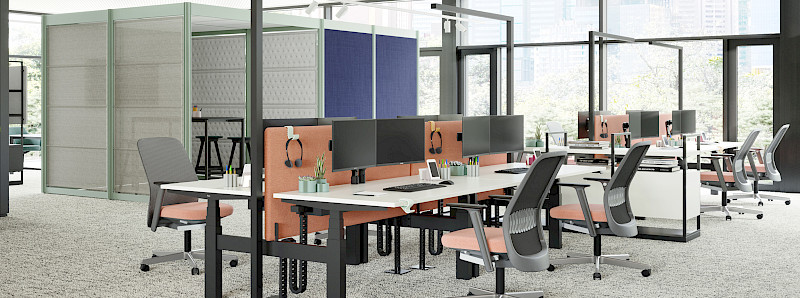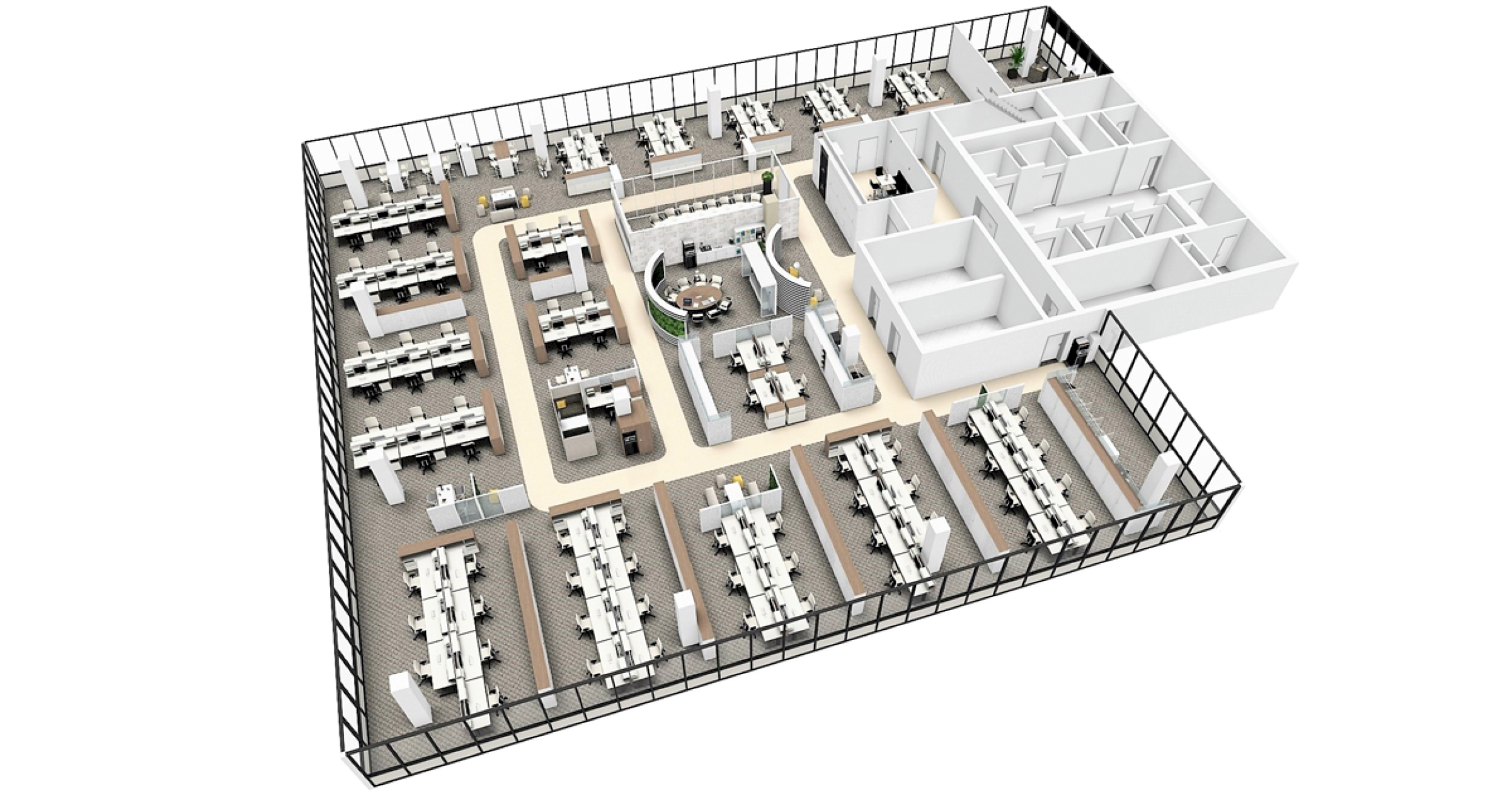“Open-plan offices are the organisational and spatial grouping of desk or screen equipment (DSE) workstations within a floor area of 400 m² or more, which may be structured using partition walls.” (Definition according to ASR A1.2)
Open-plan offices are particularly suitable for organisations undergoing frequent structural or operational change. Due to the size of the space and the large number of workstations, special attention must be paid to acoustic quality, lighting and climate control.
Advantages of Open-Plan Offices
- Close collaboration within and between teams is possible
- Flexibility in organising work processes
- Adaptability for needs-based reconfiguration of office space
Disadvantages of Open-Plan Offices
- Undisturbed work is not always possible
- Relatively high noise levels
- Lack of natural daylight in central zones
- High effort required for climate control
- Temperature and lighting cannot be individually regulated
- Higher fire safety requirements
According to ASR A1.2, a minimum floor area of 12 to 15 m² per workstation should be planned for open-plan offices.
Regardless of office type, only rooms may be used that provide at least 8 m² for the first workstation, plus a minimum of 6 m² for each additional workstation. In addition, a minimum air volume of 12 m³ per employee must be ensured.
(Note: These requirements do not apply to meeting and training rooms.)
Also, according to ASR A1.2, individual offices must have a minimum floor area of 8 m².
Our tip: As an alternative to the partition walls mentioned in ASR A1.2 for zoning large office spaces, storage units can also be used. When fitted with sound-absorbing fronts and/or backs, these typically offer better acoustic performance than partition walls. → You’ll find acoustically effective furniture for different use cases in the showrooms of the IBA Forum.
Suggestions for furnishing individual offices can be found, for example, in the showroom of the Bene office furniture brand.






